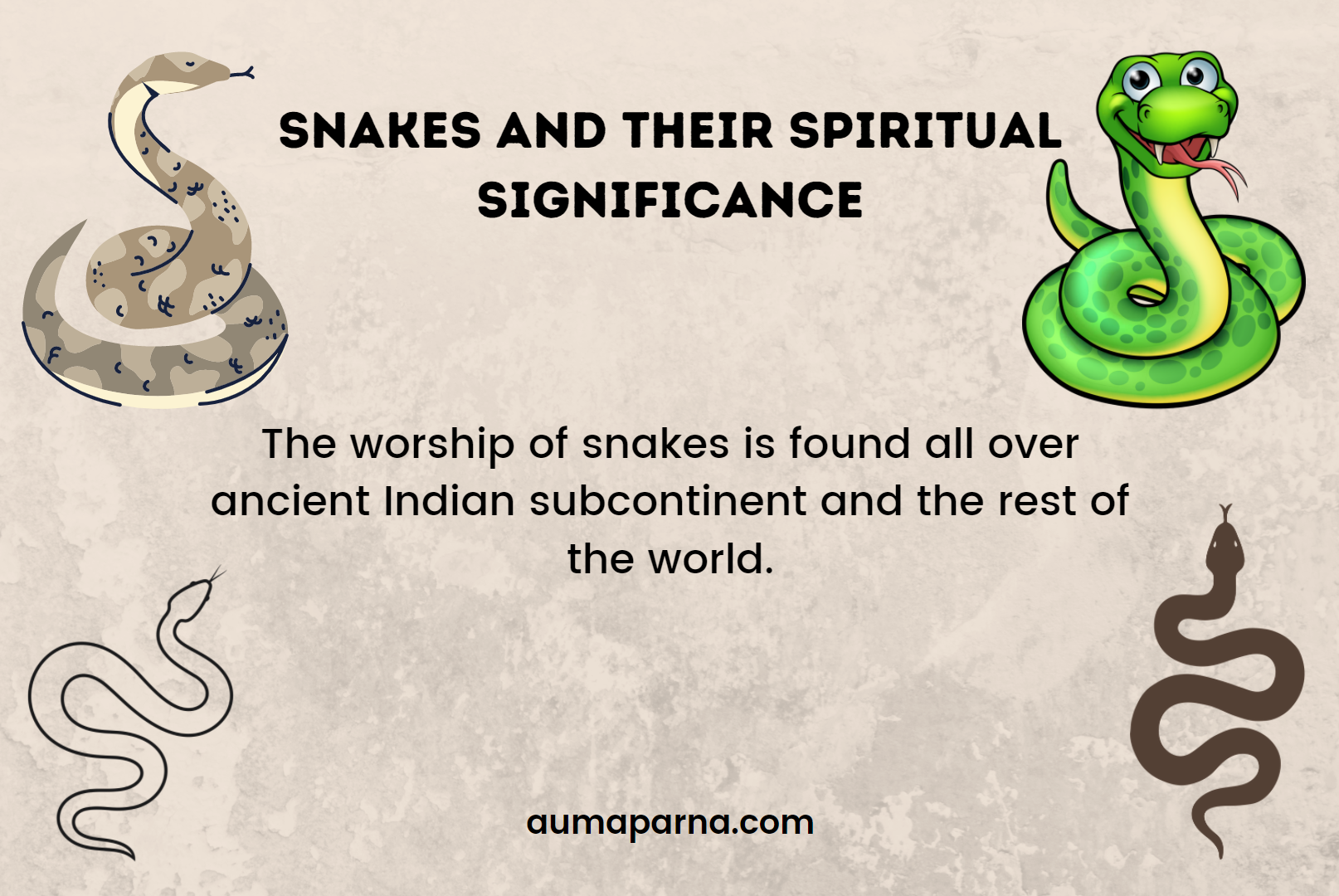The worship of snakes is found all over ancient Indian subcontinent. India, mostly being an agricultural country has always worshiped wild animals including snakes for protecting themselves from this fearsome creatures as well as attaching numerous profound symbologies to them.
Snakes or Nagas are found in all major ancient religions of India.
In Hinduism we have the great snake Adi Ananta Shesha on which Lord Vishnu reclines or sleeps. Some say the snake is a metaphor for timeline that has no start and no end. It is “ananta” or infinite. Some say that primitive humans saw the snakes coming out of hives and considered these animals to be holding the earth on their heads. Snake hives are worshipped throughout the length and breadth of the subcontinent. Adi sesha in Hindu mythology is said to hold the entire earth on its hoods. He subsequently reborns as Balarama during dwapara yuga as the God of agriculture with plough as his symbological weapon.

When the sages approched Lord Vishnu for a solution to human ailments. Lord Vishnu asked Ananta Sesha to incarnate as sage Patanjali because it was he who had witnessed the cosmic dance postures of Lord Shiva the greatest of all yogis. From the serpentine sage Patanjali emerged the eight fold principles of Yoga.
Snakes are associated with lord Shiva too. With his beloved pet “Vasuki” coiling around his neck. Some say it is a metaphor for Shiva’s “Sarpa drishti” or microvision that helps him to see the root cause of everything that happens around the world.
Vasuki plays an important role during Samudra Manthan or churning of the Ocean of Milk. The Devatas and the Asuras tie him as a rope around the mountain Mandara and churned the ocean to and fro out of which came out wealth, jewels, medicines, exilir of imortality called “Amrit” and poison that Vasuki vomited. The poison was consumed by his master, Shiva who is since is known as Nilakantha.
Just after this cosmic event, Vishnu in the form of Mohini the drag damsel, distributes Amrit to the Devatas and deceives the Asuras by giving them water. One of the Asuras, doubting Mohini’s distribution, joined the Devatas in Disguise. By the time Vishnu realised, he had drank the elixir halfway through. Vishnu cut him into two with his chakra. The two parts were known as Rahu and Ketu who are responsible for the eclipses. Ketu is symbolized as a dark snake that engulfs the moon. In Indian astrology Ketu is considered as long tailed comet thus is depicted as a bright red snake with a star on its head.
In Bhagavatam we find Krishna dancing on a snake called Kaliya or in some places as Kalinga. He dances on his multiple hoods to banish him away from Yamuna. Nevertheless he provides him with a lifetime of security with his divine footmarks on its head. The pictures of young Krishna dancing on a muti hooded serpernt is quite famous throughout India.

The eastern part of the subcontinent especially in Bengal, Bangladesh, Assam and Tripura Goddess Manasa or “Monosha” is worshipped. Her story “Monosha Mangol” describes how she was previously worshipped by the local tribals and subsequently assimilated into Hindu pantheon. She is also known as padmavati quite similar to the Jain snake Goddess associated with Parshvanath the tirthankar of Kaliyuga according to Jainism. The worship of Manasa is a beautiful amalgamation of Hinduism, Jainism and Tribal Bengali culture. She is considered to be the daughter of lord Shiva and sister of Ganesha. Similar deities like Nageswari Amman or Nagamman is found in South India who protects its devotees from snake bites.
In Jainism Parsvanath is always shown under a seven headed snake or Saptafani naag. Parshvanath is flanked by Dharanendra the Jain snake God who is worshipped as Nagraj in South India as well as Srilanka and Padmavati the Jain snake goddess who is similar to Manasa of Hinduism. Parshwa Yaksha who looks extacly like Ganesha is also associated with this trio. The amalgamation of Jainism and Hinduism has become so homogenous that every Hindu temple has Dharanendra and Padmavati depicted as a male and female serpants on its walls and gateways.
Similarly in Budhism we have “Muchalinda” a naga who formed a protective Umbrella over meditating Buddha when it rained for seven days after his enlightenment.
Snakes are also the symbols of Kundalini. The coiled serpernt which has the potential to turn humans into superhumans when awakened.It is the energy or axis mundi that enables spiritual energy to flow throughout the body. Ganesha is sometimes seen dancing with this snake in his hands or tied around his belly symbolizing his control over kundalini.
Snakes are mysterious creatures that have intrigued Indian minds since time immemorial. That is why we celebrate the day of snakes called “Naga Panchami” or “Naag chaturthi” every year to celebrate these beautiful yet deadly creatures and their symbologies.





